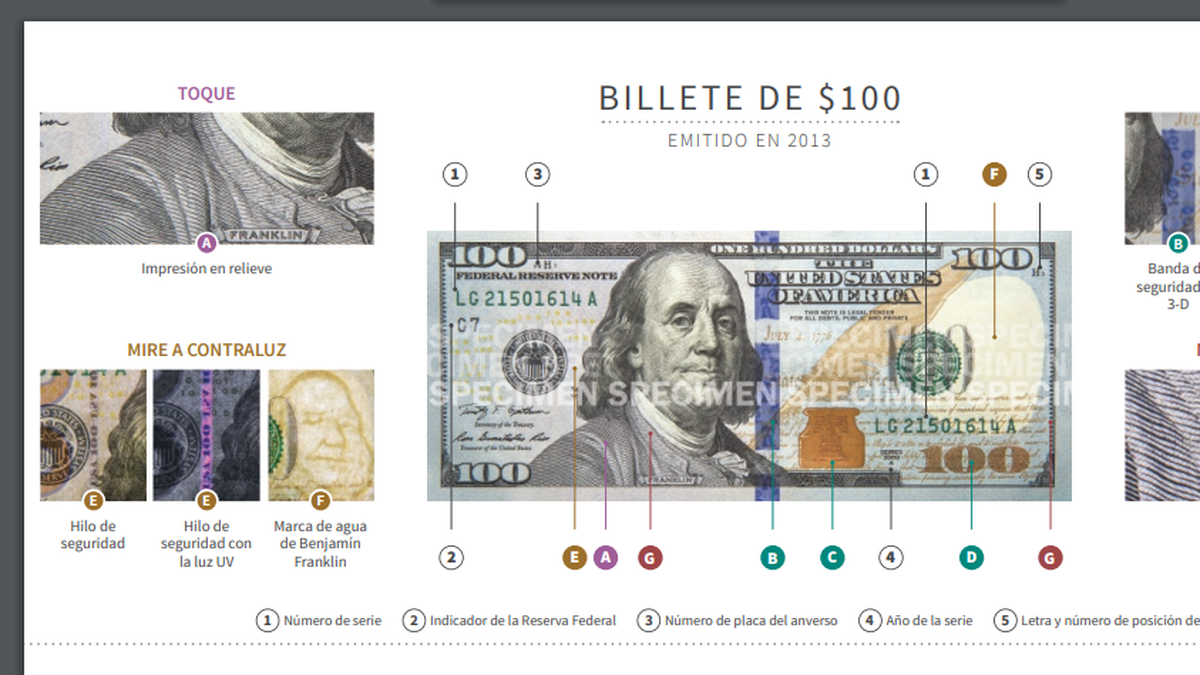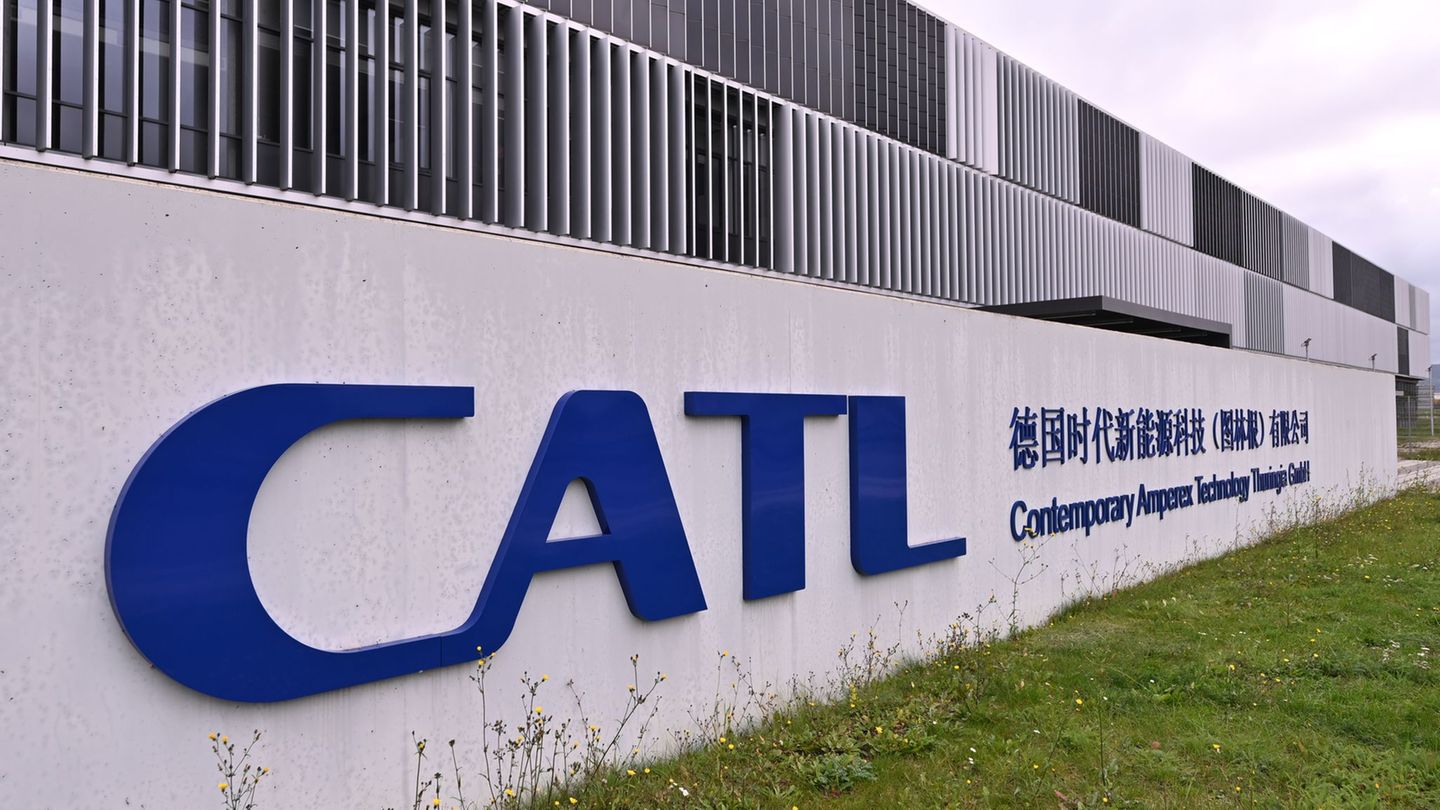The drama of the fake dollars The US dollar has grown enormously in the United States, and why does this affect us? Because in our country, the US currency remains the preferred way for Argentines to protect the value of their money. Especially considering the imminent danger posed by the devaluation of the peso.
In this sense, we consider it important to make known the security measures of the banknotes to avoid scams related to the sale of counterfeit copies. Details below.
100-dollar-billjpg.webp
The guide to identifying counterfeit dollar bills
There are different security measures to know if a banknote is real or fake. Since 2013, the United States Federal Reserve has decided to increase them to avoid any kind of confusion. And after this decision, it was the government that directly decided to put together a guide detailing each characteristic and to disseminate it publicly.
Touch of paper
The banknote has a raised print, meaning that when you run your fingers over it, it should feel somewhat rough, a unique characteristic of the printing process and paper composition.
Look against the light
When the bill is held up to the light, a watermark can be faintly seen to the right of the portrait. The bills are worth $5 and up. The security thread can also be seen, which is embedded in different positions depending on the bill’s denomination and lights up differently depending on the perspective and light exposure.
Tilt the bill
Firstly, the ink used in the bottom right corner and on the bell in the inkwell change colour depending on the viewer’s perspective, so when you tilt it you can see this change. Secondly, there is the 3D security stripe woven into the paper. The latter is only found on 100 euro notes and when you tilt it you can see the image of the bells and the number 100 alternating depending on the viewer’s perspective.
Look with magnification
The microprinting makes it possible to see words that are not visible to the naked eye. Using a magnifying glass, phrases such as “The United States of America,” “USA,” and “E Pluribus Unum” can be found. On the other hand, the paper also has red and blue security fibers embedded throughout the entire bill.
Federal Reserve Note Identifiers
Ultimately, there are characteristics that identify the banknotes according to the FED issue. Mainly the serial number, which is unique and includes the letters: G, I, J, P, L, M, N, Q (depending on the year in which they were issued). Secondly, the number that identifies which of the 12 banks commissioned by the FED issued that banknote.
For those familiar with these banknotes, an important feature is the plate number on the obverse and reverse. Also, you can see the year of the series, that is, the year in which the Treasury Department approved a design, or the year in which the signature of a new secretary was added.
And finally, the letter and position number of the banknote, which is the characteristic that indicates the position in which the copy was printed.
Source: Ambito




